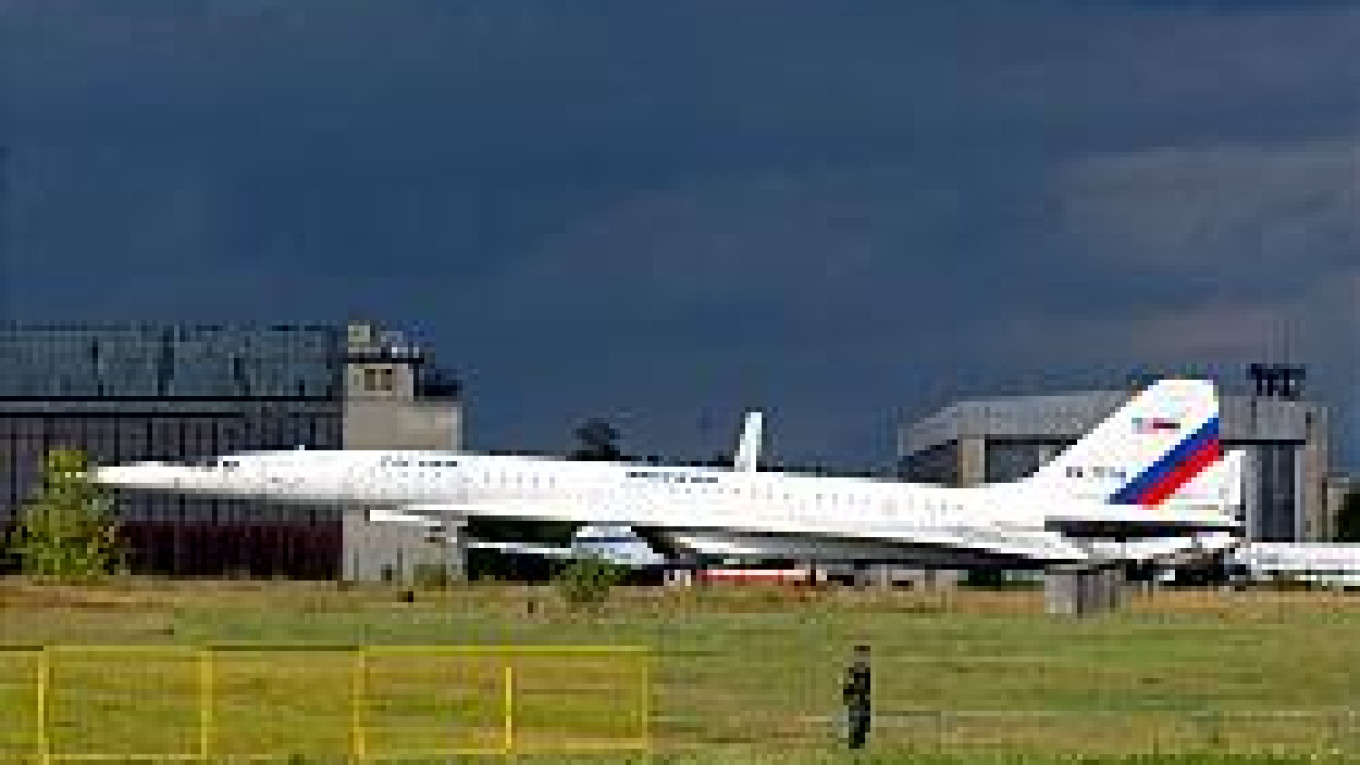"Once a man goes a few steps up, he will never be happy when he has to step down," Pukhov said.
Back in 1973, as a designer on the Tupolev team building its own supersonic passenger jet, the Tu-144, he also flew on the Concorde with a Russian delegation. Just days later, on June 3, a Tu-144 crashed at the Paris Air Show, killing all six crew members and eight people on the ground.
The Tu-144, or Concordsky, as it was dubbed in the West for its clear similarities to the Concorde, folded its wings five years later after another crash, during a test flight. "The technical issues were quickly resolved, and if there had been a desire in the government and Aeroflot to continue the program, it would have moved on," Pukhov said.
"But it was a headache. The country was not ready ..."
Tupolev started work on the Soviet supersonic jet in 1963, and the Tu-144 took off on its maiden flight Dec. 31, 1968, two months ahead of the Concorde. Its first supersonic flight came on June 5, 1969, well ahead of the Concorde's first supersonic flight on Oct. 1 of the same year. Perhaps the delta-winged aircraft's most striking feature is a small fixed wing on the forward fuselage used for takeoffs and landings. It could carry up to 140 passengers -- 40 more than the Concorde -- and fly at a slight faster speed. Its range, however, was shorter at 3,500 kilometers.
The Tu-144 flew its first scheduled passenger flight in November 1977, from Moscow to Almaty, Kazakhstan. In all, it flew 50 round trips on the route, carrying 3,194 passengers who paid 82 rubles one-way.
Tupolev built a total of 16 Tu-144s, and they flew a combined 2,556 flights, clocking up a meager 4,110 flight hours.
Two of the planes remain in Moscow -- one has been refitted into a flying laboratory that in the 1990s was used for experiments under a joint program with Boeing and NASA called High Speed Research ; the other, Pukhov said, might be sold to a museum.
Rob Rivers, a former NASA pilot with High Speed Research, has fond memories of both the Tu-144, which he flew three times in 1998, and the Concorde. He sat in the cockpit on a round-trip New York-London flight in 1997.
"Both airplanes have many similarities and many differences," he said in an e-mail interview. "The Tu-144 is slightly larger than Concorde and slightly faster. The Concorde had better range capabilities. ... Both airplanes are a tribute to their respective companies and countries."
He added: "Sadly, I do not foresee an SST [supersonic transport] in our lifetimes. Noise restrictions, pollution restrictions and many other certification requirements with which the Concorde and Tu-144 did not have to contend now make the design of an SST nearly impossible."
Pukhov agreed, although he said Tupolev is conducting studies with Russian research centers for next-generation supersonic planes seating from eight to 350 passengers.
A Message from The Moscow Times:
Dear readers,
We are facing unprecedented challenges. Russia's Prosecutor General's Office has designated The Moscow Times as an "undesirable" organization, criminalizing our work and putting our staff at risk of prosecution. This follows our earlier unjust labeling as a "foreign agent."
These actions are direct attempts to silence independent journalism in Russia. The authorities claim our work "discredits the decisions of the Russian leadership." We see things differently: we strive to provide accurate, unbiased reporting on Russia.
We, the journalists of The Moscow Times, refuse to be silenced. But to continue our work, we need your help.
Your support, no matter how small, makes a world of difference. If you can, please support us monthly starting from just $2. It's quick to set up, and every contribution makes a significant impact.
By supporting The Moscow Times, you're defending open, independent journalism in the face of repression. Thank you for standing with us.
Remind me later.


